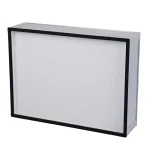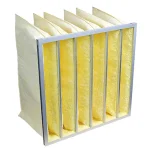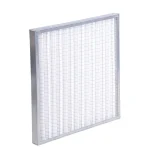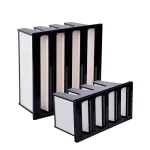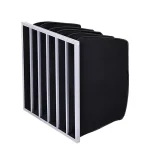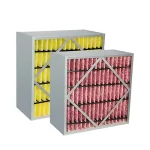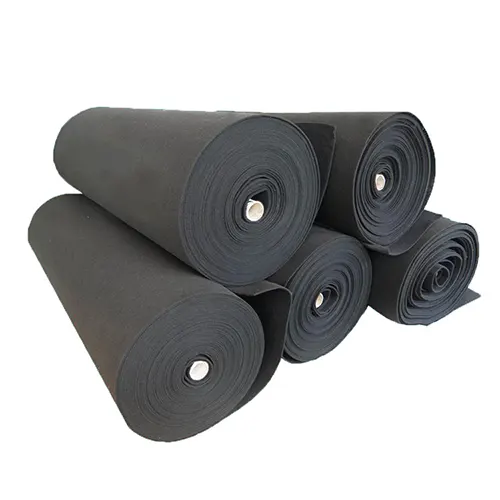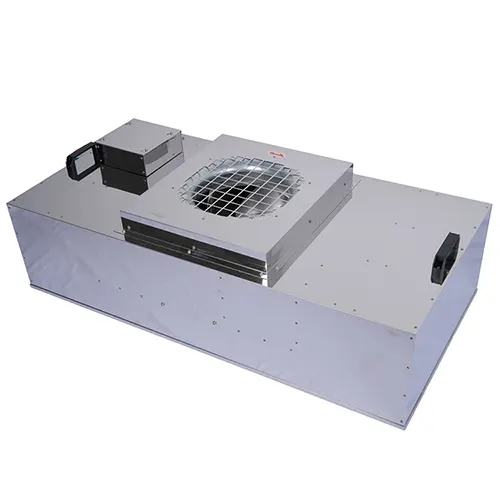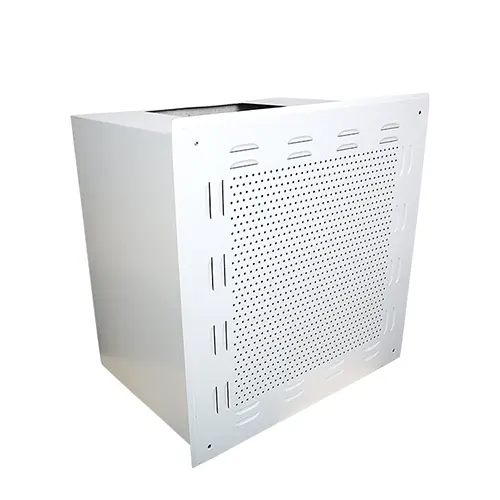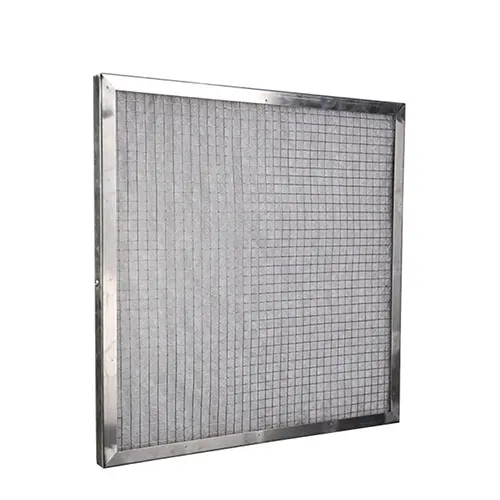Enhancing Indoor Air Quality (IAQ) for Healthier Work Environments
Indoor air quality (IAQ) is becoming a top priority for organizations worldwide, especially in office settings where employees spend a significant amount of their time. Poor IAQ is more than just an inconvenience—it can directly impact employee health, productivity, and overall well-being. In fact, studies have shown that inadequate air quality in workspaces can lead to respiratory problems, allergies, headaches, and even fatigue, which in turn reduce productivity and increase absenteeism rates.
Modern office buildings are often tightly sealed to improve energy efficiency, which can inadvertently trap pollutants inside. Common indoor pollutants such as dust, volatile organic compounds (VOCs), mold spores, and pollen accumulate over time, leading to poor air quality. This article explores effective strategies to enhance IAQ, making workspaces healthier, more comfortable, and ultimately more productive.
Sources of Indoor Air Pollution: The Threat to IAQ
Improving indoor air quality starts with recognizing the sources of pollution and understanding how they affect health. Here are some of the most common contributors to poor IAQ in office environments:
Dust
Dust is a significant source of indoor air pollution, especially in areas with high foot traffic. Office furniture, carpets, and electronics can collect dust, which carries allergens like bacteria, mold spores, and even microscopic plastic particles. When inhaled, these can irritate the respiratory system and exacerbate conditions like asthma.
Pollen
While we often associate pollen with the outdoors, it can easily find its way inside through open windows, doors, or ventilation systems. This is particularly problematic during spring and fall, triggering allergic reactions that can affect productivity and comfort levels in the workplace.
Smoke
Tobacco smoke, cooking fumes, or emissions from nearby construction sites can introduce harmful substances such as carbon monoxide, formaldehyde, and other toxins into the indoor air. Even secondhand smoke can pose serious health risks, including respiratory problems and heart disease.
Mold
Mold thrives in damp, poorly ventilated areas such as air ducts, walls, or beneath carpets. The spores released by mold can cause allergic reactions, trigger asthma attacks, and lead to other respiratory problems if left unchecked.
Volatile Organic Compounds (VOCs)
VOCs are chemical compounds that evaporate into the air from common office materials like furniture, flooring, paints, and cleaning products. Long-term exposure to VOCs can cause headaches, eye irritation, nausea, and chronic respiratory issues.
The Health and Productivity Impacts of Poor Indoor Air Quality
The effects of poor indoor air quality extend far beyond discomfort—it can have significant consequences on both health and productivity:
Respiratory Issues
Pollutants like dust, mold spores, and VOCs can trigger respiratory illnesses, including asthma and bronchitis. Long-term exposure to airborne toxins may even contribute to more severe conditions like chronic obstructive pulmonary disease (COPD).
Fatigue and Cognitive Decline
Prolonged exposure to poor air quality can cause fatigue and reduce mental clarity. Employees may experience “brain fog,” making it difficult to focus and complete tasks efficiently. Inadequate oxygen levels due to pollutants can impair cognitive function, leading to reduced problem-solving abilities and slower reaction times.
Allergic Reactions and Sick Days
Allergens such as dust mites and pollen can cause symptoms like itchy eyes, sneezing, and skin irritation. This not only affects comfort but also increases absenteeism rates as employees take time off to recover.
How Air Purifiers Improve Indoor Air Quality
Air purifiers are a powerful solution to improving IAQ, especially in environments where opening windows is not an option. These devices work by capturing pollutants and allergens from the air, making it cleaner and safer to breathe.
Types of Air filters:
HEPA Filters
High-Efficiency Particulate Air (HEPA) filters are among the most effective at trapping airborne particles. They can capture 99.97% of particles as small as 0.3 microns, including dust, pollen, pet dander, and even some bacteria. HEPA filters are particularly beneficial for people with allergies or respiratory conditions as they reduce exposure to irritants.
Activated Carbon Filters
These filters are designed to absorb gases, odors, and chemicals like VOCs. The carbon material has a porous structure that captures molecules, preventing them from circulating in the air. This makes activated carbon filters ideal for removing smoke, cooking odors, and chemical fumes that can accumulate in office spaces.
Panel Filters
Panel filters are flat, rectangular filters commonly used in HVAC systems. They are effective for capturing larger particles like dust and lint. While they may not be as efficient as HEPA filters, panel filters are great for pre-filtering the air before it goes through more specialized filters, thereby extending the lifespan of other air purification components.
Pocket Filters
Pocket filters, also known as bag filters, are designed with multiple pockets to provide a large surface area for filtering out fine particles. These filters are particularly useful in commercial and industrial settings where high airflow and filtration efficiency are needed. Pocket filters can capture a wide range of contaminants, including dust, pollen, and airborne fibers, making them ideal for improving IAQ in large spaces like office buildings.
V-Bank Filters
V-bank filters are high-capacity filters arranged in a V-shaped configuration, increasing their filtration surface area without taking up additional space. These filters are highly efficient at capturing fine particles and are often used in environments that require high air quality standards, such as healthcare facilities and laboratories. V-bank filters are excellent for spaces that need high airflow and filtration efficiency while maintaining low pressure-drops.
Choosing the Right Air Purifier for Your Office
Selecting the right air purifier depends on the size of the workspace, the types of pollutants present, and specific employee needs.
Small Offices or Personal Workstations
Compact HEPA air purifiers are perfect for individual desks or small rooms. These models are lightweight, portable, and operate quietly, ensuring they don’t disrupt work.
Medium-Sized Offices (30-50 sqm)
For spaces like conference rooms or open office areas, a combination of HEPA and activated carbon filters is ideal. These devices provide multi-layer filtration and can handle higher volumes of air, effectively reducing dust, pollen, and VOC levels.
Large Open Offices
For larger spaces, consider air purifiers with higher Clean Air Delivery Rate (CADR) ratings and features like smart sensors, auto-mode, and remote control for efficient air purification.
Practical Tips to Improve Office IAQ
Improving IAQ doesn’t stop at using air purifiers. Here are additional strategies to ensure your office air remains clean
Regular Filter Replacements
Ensure air purifier filters are changed every 6-12 months to maintain efficiency. Some models come with washable or reusable filters, which can reduce maintenance costs.
Optimize Ventilation
Increase airflow by using fans or opening windows (where possible) to dilute indoor pollutants. HVAC systems should be regularly maintained to prevent the buildup of dust and mold.
Implement a Cleaning Routine
Regularly clean office equipment, carpets, and furniture to minimize dust and allergens. Use non-toxic, eco-friendly cleaning products to reduce the introduction of VOCs.
Add Indoor Plants
Certain plants, such as spider plants, peace lilies, and snake plants, can naturally improve air quality by absorbing toxins and increasing oxygen levels. They also create a more welcoming and aesthetically pleasing office environment.
Monitor Air Quality
Consider investing in air quality monitors to track pollutant levels and adjust air purification systems accordingly. This proactive approach ensures that IAQ remains optimal at all times.
Conclusion
Prioritizing indoor air quality is not just a matter of comfort—it’s a vital investment in the health, well-being, and productivity of your workforce. Clean air enhances cognitive function, reduces absenteeism, and fosters a healthier work environment. By incorporating air purifiers, optimizing ventilation, and adopting regular cleaning practices, you can significantly improve IAQ in your office.
If you’re looking to improve the air quality in your workspace, investing in high-quality air purification solutions tailored to your specific needs is a great place to start. Whether it’s reducing allergens, eliminating VOCs, or simply creating a fresher atmosphere, taking steps to enhance IAQ can yield significant long-term benefits for both your employees and your business.
Contact Clean-Link’s filtration experts for more tailored solutions for your requirements.
